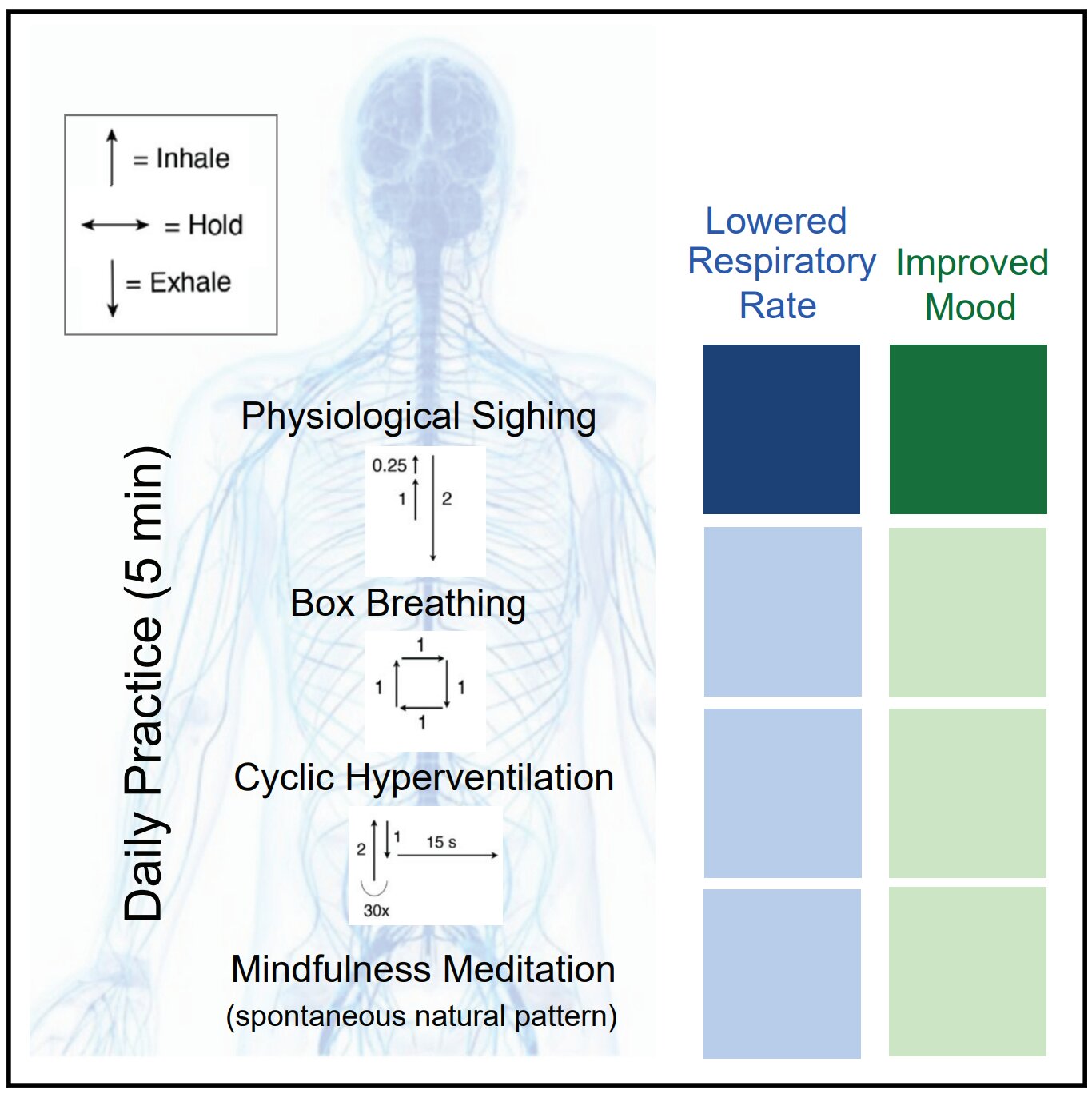Lately there's been more attention in the media due to Andrew Huberman of Huberman Labs on a breathing technique quite similar to pipe breathing, called physiological sigh.
In the technique of physiological sighing you inhale, then inhale again for a very small fraction of the time, followed by a very long exhale. They don't explicitly state to sigh but it's in the name and in the demonstrations I've seen they all sigh, so yeah. The extra double inhale was said to re-inflate the aveoli after the peak to facilitate greater gas exchange. The physiological sigh is alleged to be done spontaneously by the body when in a clausterphobic setting or while in deep sleep to off-gas CO2.
In a recent paper in Medical Express that looked at physiological sighing vs box breathing and hyperventilation, and they found physiological sighing to be more effective than box breathing at relaxing people.

 medicalxpress.com
medicalxpress.com
In the technique of physiological sighing you inhale, then inhale again for a very small fraction of the time, followed by a very long exhale. They don't explicitly state to sigh but it's in the name and in the demonstrations I've seen they all sigh, so yeah. The extra double inhale was said to re-inflate the aveoli after the peak to facilitate greater gas exchange. The physiological sigh is alleged to be done spontaneously by the body when in a clausterphobic setting or while in deep sleep to off-gas CO2.
In a recent paper in Medical Express that looked at physiological sighing vs box breathing and hyperventilation, and they found physiological sighing to be more effective than box breathing at relaxing people.

Study shows cyclic breathing technique more effective in reducing stress than mindfulness meditation
At team of researchers at Stanford University reports evidence that people who engage in cyclic sighing breathing exercises see a greater reduction in stress than those engaging in mindfulness meditation. In their paper published in the journal Cell Reports Medicine, the researchers describe...
The three types of breathing exercises tested included cyclic sighing, in which more time and thought is spent on exhaling than on inhaling or holding the breath; box breathing, in which breathing and holding are done for the same amount of time; and cyclic hyperventilation, in which inhalations last longer than exhalations.
Research for the study was conducted online during the pandemic when stress was unusually high for most people; 114 volunteers engaged in one of the stress reducers for five minutes each day for a month at the time of their choosing. Each volunteer kept a stress journal to assess the effectiveness of their stress reduction activities.
The researchers found that for the most part, the volunteers reported that they found the exercise a positive experience—90% reported positive feelings. They also found that those volunteers using breathing exercises showed more stress reduction than those doing mindfulness meditation. And they also found that those who did cyclic sighing reported the greatest reductions in stress compared to the other breathing techniques.


